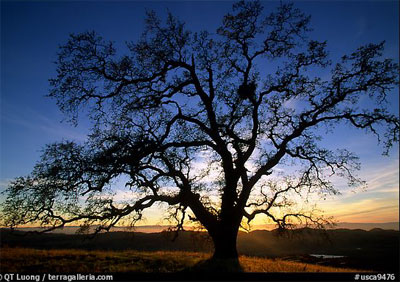California Oak

There is a variation of California’s Oak trees found throughout the state. The main species of oak in southern California include blue oak, interior live oak, valley oak, canyon oak, coast live oak, California shrub oak, and Engelmann oak. They are found to be the dominant species in many San Bernardino chaparral and woodland habitats. Oak woodlands provide habitat for more than 300 species of wildlife, moderate temperature extremes, reduce soil erosion and sustain water quality. Moreover, oak woodlands facilitate nutrient cycling and provide forage for numerous wildlife species. The wildlife that surrounds the trees depends on them for many reasons, such as, protection for nesting, shelter, food, and shade. However, according to the Oaks 2040 survey, it estimates that 750,000 acres of California oak woodlands will be seriously threatened by 2040 as a burgeoning state population makes ever more use of the wild land in California.
In 2001, the California State Legislature approved the California Oak Woodlands Conservation Act. The Act acknowledges the monetary and ecological value of oak woodlands and resulted in the creation of the California Oak Woodlands Conservation Program that provides $10 million dollars in grants for public and private oak woodland conservation efforts.
Despite these efforts, the State continues to lose oak woodlands to development, firewood harvesting and agricultural conversions. For projects affecting oak woodlands within the County of San Bernardino, the County has established a special permitting process that provides special consideration to California oak woodlands.